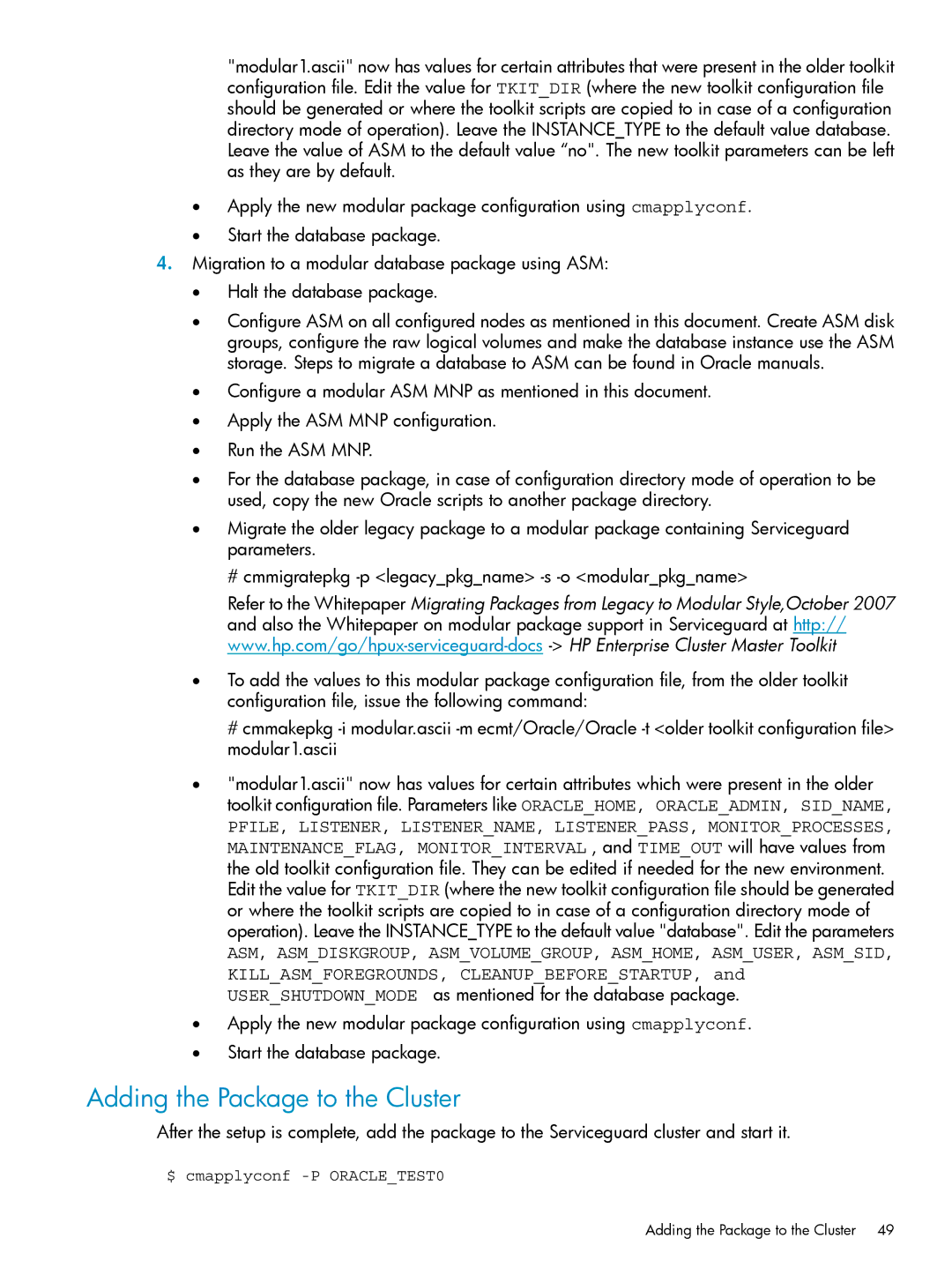"modular1.ascii" now has values for certain attributes that were present in the older toolkit configuration file. Edit the value for TKIT_DIR (where the new toolkit configuration file should be generated or where the toolkit scripts are copied to in case of a configuration directory mode of operation). Leave the INSTANCE_TYPE to the default value database. Leave the value of ASM to the default value “no". The new toolkit parameters can be left as they are by default.
•Apply the new modular package configuration using cmapplyconf.
•Start the database package.
4.Migration to a modular database package using ASM:
•Halt the database package.
•Configure ASM on all configured nodes as mentioned in this document. Create ASM disk groups, configure the raw logical volumes and make the database instance use the ASM storage. Steps to migrate a database to ASM can be found in Oracle manuals.
•Configure a modular ASM MNP as mentioned in this document.
•Apply the ASM MNP configuration.
•Run the ASM MNP.
•For the database package, in case of configuration directory mode of operation to be used, copy the new Oracle scripts to another package directory.
•Migrate the older legacy package to a modular package containing Serviceguard parameters.
# cmmigratepkg
Refer to the Whitepaper Migrating Packages from Legacy to Modular Style,October 2007 and also the Whitepaper on modular package support in Serviceguard at http://
•To add the values to this modular package configuration file, from the older toolkit configuration file, issue the following command:
# cmmakepkg
•"modular1.ascii" now has values for certain attributes which were present in the older toolkit configuration file. Parameters like ORACLE_HOME, ORACLE_ADMIN, SID_NAME,
PFILE, LISTENER, LISTENER_NAME, LISTENER_PASS, MONITOR_PROCESSES, MAINTENANCE_FLAG, MONITOR_INTERVAL , and TIME_OUT will have values from the old toolkit configuration file. They can be edited if needed for the new environment. Edit the value for TKIT_DIR (where the new toolkit configuration file should be generated or where the toolkit scripts are copied to in case of a configuration directory mode of operation). Leave the INSTANCE_TYPE to the default value "database". Edit the parameters
ASM, ASM_DISKGROUP, ASM_VOLUME_GROUP, ASM_HOME, ASM_USER, ASM_SID, KILL_ASM_FOREGROUNDS, CLEANUP_BEFORE_STARTUP, and USER_SHUTDOWN_MODE as mentioned for the database package.
•Apply the new modular package configuration using cmapplyconf.
•Start the database package.
Adding the Package to the Cluster
After the setup is complete, add the package to the Serviceguard cluster and start it.
$ cmapplyconf
